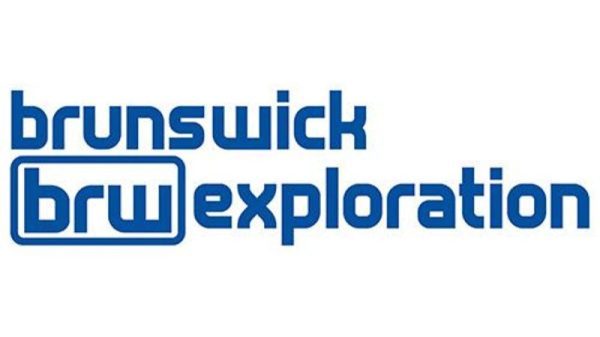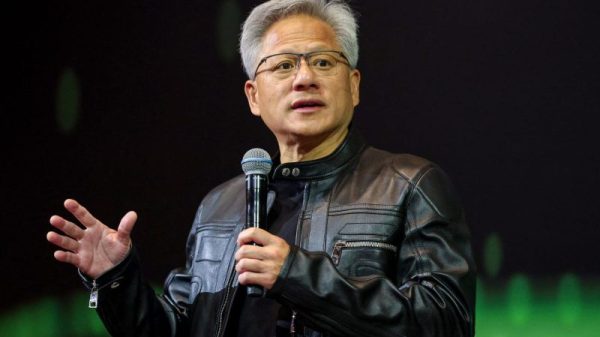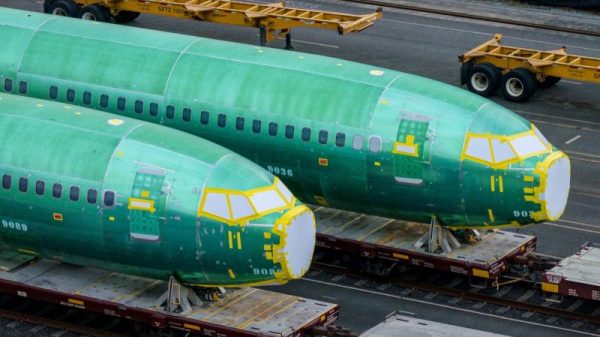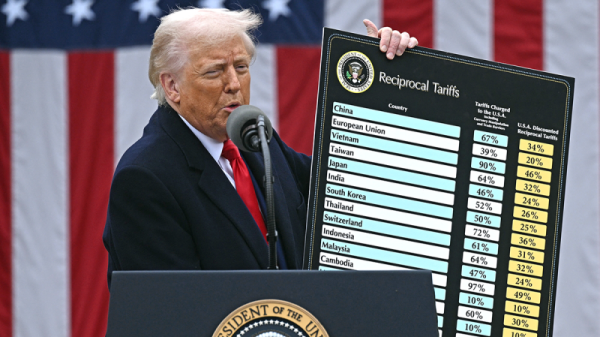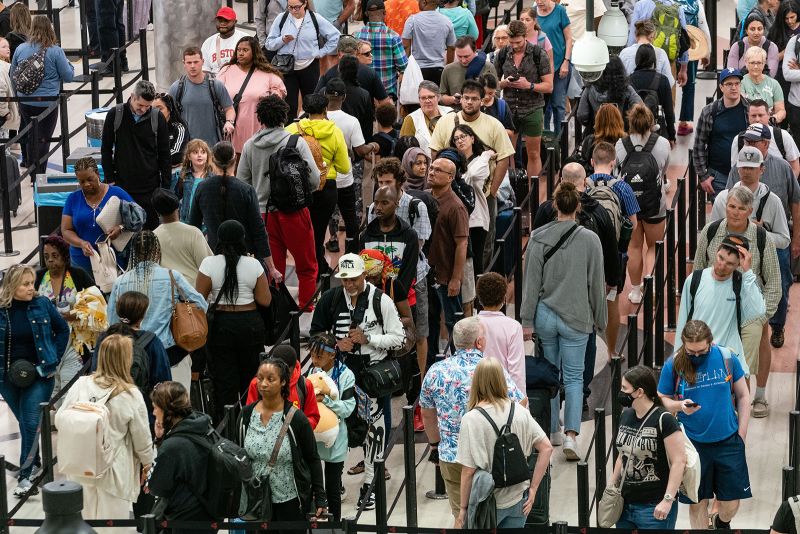Travel has come a long way since the age of Silk Road caravans, daunting sea voyages and steam locomotives -– and will continue to transform in years to come.
Concepts that feel plucked from sci-fi novels and films are quickly making their way into mainstream travel, shaping every step of the journey.
Sooner rather than later, we could be piloting passenger drones around Singapore or rocketing into Earth’s orbit to admire the world from the edge of space.
From autonomous taxis to passenger drones, biometric immigration tunnels, instant translation and hotels, here’s a peek at what’s coming down the runway.
The end of airport lines
Although controversial, biometric identification (automatically verifying one’s identity via fingerprints, facial recognition or iris scans) is quickly becoming the technology of choice at airports worldwide.
Considered a faster and more accurate way to screen passengers, biometrics can cut processing time for typical airport procedures – think baggage check-in, lounge access, boarding and immigration control – in half.
For example, in 2018, Dubai International Airport introduced biometric “Smart Gates” tunnels, which use facial recognition to verify travelers’ identities in as little as five seconds.
It’s as simple as it sounds: after deplaning, travelers walk into a tunnel, look at a green light, and then continue to baggage claim without waiting in line or interacting with an immigration officer.
Elsewhere in the world, facial recognition technology is already in use to some extent at Hong Kong International Airport, Tokyo Narita, Tokyo Haneda, Indira Gandhi International in Delhi, London Heathrow and Paris Charles de Gaulle, among other airports.
Meanwhile, the European Union plans to roll out an automated entry-exit system in 2024 that uses fingerprints and facial images to identify foreign travelers and streamline border control checks.
Airlines are also adopting biometric identification.
Emirates has created a “biometric pathway” at Dubai International Airport that enables passengers to pass through immigration and boarding without presenting their documents.
And in the US, major airlines like American Airlines, United and Delta have been experimenting with biometric check-in, bag drops and boarding gates at select airports for the last couple of years.
Less lost luggage
Have you arrived in a foreign country only to spend the first day of vacation stocking up on underwear, toiletries and essential clothing while your luggage takes an unexpected detour?
Given the millions of mishandled checked bags every year, it’s no wonder people are yearning for tech-savvy solutions to this common travel headache.
Some are turning to devices like SmartTags, Tile Pros and AirTags to keep track of their belongings. Others opt for sophisticated suitcases like the Samsara’s Tag Smart, which includes an integrated AirTag that syncs with Apple’s Find My app and uses Bluetooth to track the bag’s location.
Looking ahead, we’ll likely see digital bag tags containing RFID transmitters replace conventional paper tags – an evolution that would save time at check-in while simultaneously making tracking and identifying luggage easier for airlines.
Alaska Airlines, Lufthansa and Qatar Airways, among others, are ahead of the game, having partnered with Dutch digital bag tag pioneer BAGTAG. Such products enable travelers to register and activate their luggage tag at home, then drop luggage at a self-service kiosk and track it via an app.
Since tagging errors are just one reason for delayed or lost luggage, airlines and airports are also looking to solve common issues such as transfer mishandling, failure to load, ticketing errors and weather delays.
In the future, don’t be surprised if we see automated baggage handling, AI-powered bag recognition programs, AI security scanning and perhaps even an AI global database that links travelers with their bags – all solutions that could lead to fewer lost bags in the long run.
Next-level augmented reality
On a future trip to Europe, imagine exploring the Accademia Gallery in Florence guided by a talking “David” sculpture or embarking on a digital treasure hunt through the streets of Paris.
Requiring only a phone and internet connection, augmented reality (AR) can add another layer of intrigue to our travel experiences.
Specterras Productions, which strives to make the world’s natural and cultural wonders more accessible via technology, is already bringing such experiences to life.
AR and virtual reality (VR) became more mainstream during the Covid-19 pandemic when museums and destinations introduced interactive virtual experiences for would-be travelers.
What’s more, experimental artists like KAWS – known for his toy-like sculptures and collectables – famously embraced the technology in his “Expanded Holiday” project, which saw giant AR sculptures levitating in 12 cities around the world in 2020.
Breer says these technologies also enable people to explore parts of the world they might not be able to see in person.
“Economically, visiting places like Pompeii, Palmyra, Machu Picchu or the Great Barrier Reef is very difficult. So, for many people, VR and AR will provide a good substitute for these experiences,” Breer adds.
And in terms of planning, VR may also play a more vital role in decision-making in the future.
If travelers can explore a destination, hotel, restaurant or excursion via VR first, they will likely have more confidence when making reservations.
The rise of flying taxis
You’ve probably seen videos of passenger drones and eVTOL – electric vertical take-off and landing aircraft that don’t require a runway – taking over the internet.
These futuristic aircraft tend to be electric, ultralight and kitted out with autopilot software that makes it possible for everyday people to hop in the pilot seat – after an orientation session and VR flight simulation, of course.
That’s the strategy at LIFT Aircraft, which says that anyone can fly its amphibious HEXA aircraft in the US without a pilot’s license since it qualifies as an “ultra-light” vehicle under federal regulations. (That said, the Federal Aviation Administration recently proposed a comprehensive rule for training and certifying pilots of power-lifted aircraft.)
The aircraft offers many automated safety precautions like a collision-avoidance system, a triple-redundant flight computer and a ballistic parachute for the whole aircraft.
On track to start offering commercial flights in 2023, the company plans to let travelers fly the aircraft on short, scenic rides – about 8-15 minutes at a time – during a 25-city roadshow across the US.
In the future, customers will be able to find and book LIFT flights via a mobile app that provides flight simulation training, a proficiency test, a pre-flight checklist and ground crew support.
Other companies, like Ehang in China, are on a mission to alleviate traffic jams with flying taxi drones.
At the same time, New York-based Kelekona plans to offer flights on its battery-powered, 40-passenger drone bus as an eco-friendly alternative to mass transit.
Another notable company is Volocopter, which is on its way to bringing a fleet of electric air taxis to Singapore and Paris in 2024.
Then there’s the Jetson ONE – a single-person, all-electric eVTOL with auto-hover, stable flight and landing capabilities – which can fly for about 20 minutes up to 63 mph.
“Electric personal flying cars will revolutionize adventurous travel. Safaris, mountain tops, visiting Machu Picchu – all places that are currently difficult to get to will suddenly be possible.”
Robotaxis gain momentum
While some taxi services head into the clouds, others will stay firmly on terra firma – but with some serious upgrades.
Boston-based Motional, a joint venture between Hyundai and global tech company Aptiv, has seen some early success.
Available to public passengers in Las Vegas, Motional provides autonomous robotaxis (via Lyft and Uber apps) that can drop passengers at popular destinations on the Las Vegas Strip.
Another company seeing momentum is Waymo (a subsidiary of Google’s parent company Alphabet Inc.), which has operated the first fully autonomous ride-hailing service in parts of Phoenix since 2020.
Available via the Waymo One app, the service has since expanded to downtown Phoenix, San Francisco and, next up, Los Angeles.
Of course, major players like Amazon, Tesla and Cruise are speeding forward in North America.
Amazon’s self-driving vehicle unit known as Zoox is being tested in San Francisco; an update to Tesla’s Full Self-Driving Beta software became available in mid-March, addressing the safety risks associated with an earlier recall; and Cruise has operations underway in San Francisco and Austin.
On the other side of the world, in China, tech giant Baidu began operating a fully autonomous ride-hailing service, Apollo Go, in cities like Beijing, Chongqing and Wuhan in 2022 and plans to expand rapidly in 2023.
Net-zero flights on the horizon
As passenger drones and eVTOLs become commonplace, you may wonder: what’s next for good old-fashioned airplanes?
The future of travel is inextricably linked to climate change – a reality that led the International Civil Aviation Organization (ICAO) to announce a long-term goal to achieve net-zero carbon emissions by 2050.
Thanks to a mix of emerging technologies ranging from sustainable aviation fuel to hydrogen-powered engines to all-electric planes, it’s certainly possible, though critics have expressed considerable doubt.
US-based Eviation Aircraft is leading the way, providing a peek into the future with its sleek, all-electric “Alice” plane.
Set to enter service in 2027, the nine-seater commuter plane aims to reduce the environmental impact of regional hops. So far, over 300 Alice aircraft have been ordered by the likes of Aerus airline in Mexico, DHL, Air New Zealand and more.
We may also see a supersonic comeback within the next decade. Denver-based Boom has been working on an updated version of the Concorde that aims to make supersonic travel much quieter, greener and more affordable.
According to the company, Boom’s “Overture” aircraft can carry up to 80 people at Mach 1.7 speeds (or about twice as fast as traditional airlines) while emitting zero carbon emissions.
Meaning, a flight from New York City to Frankfurt could take four hours instead of eight, or you could go from LA to Sydney in eight hours instead of 14.
And since Overture will fly at a higher altitude than today’s aircraft – up to 60,000 feet – travelers would get to see the curvature of the Earth through the windows.
So far, several major airlines, including American Airlines, United and Japan Airlines, have placed orders for Overture, signaling industry confidence in the future of supersonic.
We’ll have to be patient, though – Boom plans to commence aircraft production in 2024, conduct test flights in 2027, and achieve certifications to carry passengers as early as 2029.
Eco-fabulous hotel stays
Like air travel, eco-conscious hotels are paving the way for more sustainable travel in the future.
When room2 Chiswick opened in London in 2021, it became the world’s “whole life net-zero” hotel.
In other words, the property has offset its entire carbon footprint, from production and construction, materials, maintenance, electricity and so on.
Compared with a typical UK hotel of a similar size, room2 uses 89% less energy per square meter thanks to ground source heat pumps, solar panels, water-saving fixtures, sustainable procurement policies, a biodiverse green roof and a zero-waste policy.
In the US, Bauhaus-style Hotel Marcel in New Haven, Connecticut, is on track to become the first net-zero hotel in the country after revitalizing a heritage building designed by Hungarian-born architect Marcel Breuer.
Opened in May 2022, the hotel’s day-to-day operations are fully solar-powered by 1,000 PV panels on the roof, and, as a result, the property emits zero carbon emissions.
It also features triple-glazed windows, an electric shuttle van, and a carport full of electric car chargers, including 12 Tesla Superchargers – enhancements that have earned the property LEED Platinum certification.
Looking ahead, the Six Senses Svart aims to be the world’s first energy-positive hotel when it opens in 2024 within the Arctic Circle in Norway.
With its low-impact overwater design inspired by local fish-drying structures, a solar power system, a zero-waste restaurant and efficient waste and water management systems, the hotel aims to help eco-minded travelers responsibly explore the polar region.
Also coming up in 2024 is Sheybarah Resort, an entirely off-grid resort in a protected marine park in the Red Sea off the coast of Saudi Arabia known for its dense mangroves, pristine coral reefs and sea life.
The LEED-Platinum property plans to minimize its footprint in many ways, from suspending pod-like hotel rooms above the water (so as not to disturb marine life) to installing a solar farm, a solar-powered desalination plant for fresh water and on-site recycling facilities.
Say goodbye to language barriers
There’s nothing wrong with playing charades, but wouldn’t it be amazing to have deeper conversations with the people you meet while traveling?
Suppose language barriers became a thing of the past. In that case, we could connect across cultures, work and live abroad, discover new business opportunities and relate to far-flung family members.
The good news is that real-time translation is growing more sophisticated by the day.
Google’s Pixel Buds can either translate what’s being said directly into your ear or share a transcription so you can follow along.
The company has also been working on wearable augmented-reality glasses that display translated text on the lenses in real-time.
Another company, Mymanu, also offers auto voice translation via its CLIK S earbuds.
Currently used in the hospitality industry and soon to be rolled out to help asylum seekers in the UK, the headphones sync with the company’s MyJuno translation app to help users communicate with people in over 37 languages.
The company says it will soon be launching the world’s first voice-controlled, eSIM-enabled earbuds. Called “Titan,” they can be used like a screen-less phone, and they also offer live translation without the need for a phone app.
The space race rockets forward
We’re well on our way to exploring the final frontier with a flurry of space tourism initiatives available now – or very soon – to the most affluent explorers.
According to SpaceVIP, which bills itself as the only aggregator of space-related experiences, roughly a dozen types of expeditions are available in 2023, with many more to follow.
For starters, Blue Origin offers excursions past the Kármán Line – a boundary 62 miles above sea level that marks the beginning of outer space.
Meanwhile, SpaceX has successfully launched commercial orbits around the Earth, missions to the International Space Station (ISS), and plans to take Japanese entrepreneur Yusaku Maezawa and an international crew of artists, actors, musicians and athletes on the first civilian mission around the moon in 2023.
Those seeking a leisurely and luxurious experience can soon travel to the edge of space in a pressurized Spaceship Neptune capsule, propelled by a SpaceBalloon (the same used by NASA), with Space Perspective.
During the six-hour journey, due to launch in 2024, travelers will enjoy panoramic views of the Earth, a gourmet meal and cocktails before a slow descent and water landing.
Virgin Galactic, meanwhile, plans to launch 90-minute joyrides into the upper atmosphere this summer.
If they do go ahead, the $450,000 suborbital flight will reach about 50 miles above the planet, where passengers will have about a minute to enjoy astounding views and experience zero gravity.
Meanwhile, several companies, including Hi-Seas, Space Training Academy, Nastar Center and Air Zero G, provide Earth-bound training programs so you can experience various levels of gravity, learn astronaut maneuvers and enjoy simulator experiences like a moon launch or ISS docking.
Hyperloop coming down the pipeline
US entrepreneur Elon Musk has been talking about hyperloop technology – an ultra-high-speed transport system in a low-pressure vacuum tube – for years.
As the pitch goes, with hyperloop networks, we could travel in pods up to 760 mph from LA to San Francisco in 30 minutes, Beijing to Shanghai in 60, and Paris to Amsterdam in 90.
In addition to saving time, proponents claim hyperloop also has the potential to provide a cheaper, faster, safer and more sustainable alternative to conventional mass transit.
Over the past decade, early movers like Musk’s The Boring Company, Virgin Hyperloop (now Hyperloop One) and Hyperloop Transportation Technologies (HyperloopTT) made some impressive headway but encountered regulatory, funding and infrastructure challenges.
Despite an unsuccessful IPO attempt earlier this year, HyperloopTT is reportedly working on potential projects, including a “Great Lakes” link between Chicago, Cleveland and Pittsburgh, according to Bloomberg.
While thoroughly tested hyperloop transit networks may still be a decade, if not decades, away, many innovative companies are pushing the technology forward.
According to the South China Morning Post, the China Aerospace Science and Industry Corporation completed a few successful hyperloop test runs in Shanxi province in January 2023.
In addition, Hardt Hyperloop in the Netherlands demonstrated its technology at low speeds and is now constructing the European Hyperloop Center for high-speed demonstrations and testing.
Meanwhile, Toronto-based TransPod hopes to bring hyperloop technology to Canada with its eponymous tube-based transportation system powered by renewable energy.
By 2025, the company plans to build a 620-mile-per-hour TransPod link between Calgary and Edmonton, connecting the two cities in 45 minutes.
Maybe it’s a pipedream – or maybe it will transform travel as we know it.





